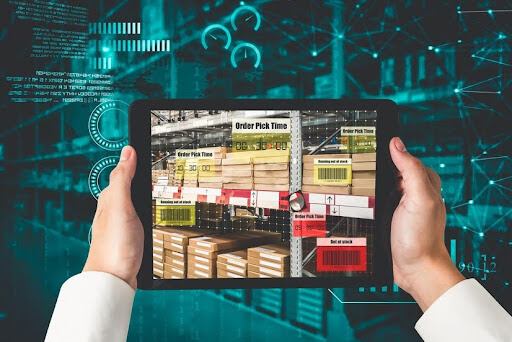 1-800-805-5783
1-800-805-5783 
Navigating the dynamic landscape of product development requires meticulous planning and organization. Two fundamental tools that drive this process are product roadmaps and product backlogs.
A study by VersionOne found that organizations using agile methodologies with well-managed product backlogs experience a 30% increase in project success rates. These strategic frameworks guide product teams, offering clarity, direction, and prioritization throughout the development lifecycle.
This blog explores the definitions, uses, and synergies of product roadmaps and product backlogs, going deep into their nuances. Teams may successfully map out their path from conception to delivery, guaranteeing alignment with business objectives and consumer expectations by knowing the roles that each performs in driving product development.

A clear vision and strategic direction are paramount in the ever-evolving product development landscape. Product roadmaps serve as a high-level visual representation of a product’s journey over a specific timeframe.
What is a Product Roadmap?
Think of a product roadmap as a detailed map outlining the key initiatives, features, and milestones that will guide your product’s current state to its desired future. To better understand this concept, reviewing product roadmap examples can provide valuable insights into how successful companies plan and execute their product development strategies.
It acts as a single source of truth, ensuring everyone involved understands the product’s long-term goals and the steps required to achieve them. A study by McKinsey found that companies with a clear product roadmap are 13% more likely to achieve their financial goals.
Critical Elements of a Product Roadmap:
Who Uses Product Roadmaps?
While product roadmaps are primarily targeted at stakeholders like executives, investors, and marketing teams, they also serve as valuable communication tools for internal teams.
Understanding the different types of product roadmaps can help tailor the roadmap to meet the specific needs of various audiences and ensure alignment across the organization.
Benefits of Product Roadmaps:
By effectively utilizing product roadmaps, organizations can navigate the complexities of product development with a clear vision and a well-defined path to success.

While product roadmaps provide the overarching vision, product backlogs are the blueprint for bringing that vision to life. They act as a living document, constantly evolving as the product progresses.
What is a Product Backlog?
Imagine a product backlog as a prioritized to-do list for the development team, containing all the tasks, user stories, bugs, and other requirements necessary to deliver the product vision. It’s a dynamic document that constantly adapts to changing needs and priorities.
Critical Elements of a Product Backlog:
Who Uses Product Backlogs?
The product and development teams primarily use product backlogs for internal planning and execution. They serve as the central source of truth for what needs to be done and in what order.
Benefits of Product Backlogs:
By meticulously managing product backlogs, organizations can ensure the efficient execution of their product roadmap, leading to the successful development of a product that meets user needs and delivers its intended value.

While product roadmaps and backlogs serve distinct functions, they are not isolated entities. Instead, they work in a harmonious partnership to guide a product’s journey from vision to reality.
The Roadmap as the Guiding Light:
Imagine the product roadmap as a high-level map charting your product’s overall course. It defines the long-term vision, outlining strategic objectives, key initiatives, and significant milestones over a specific timeframe. This roadmap serves as the guiding light, ensuring everyone involved understands the product’s ultimate destination.
The Backlog as the Action Plan:
The product backlog, on the other hand, translates the roadmap’s strategic vision into actionable steps. It acts as a detailed to-do list, meticulously outlining all the tasks, user stories, bugs, and other requirements necessary to bring the roadmap to life. This backlog is a dynamic document, constantly evolving as the product progresses and priorities shift.
The Intertwined Dance:
The roadmap and backlog are not static entities; they engage in a continuous dialogue:
The product roadmap sets the strategic direction, while the product backlog translates that direction into concrete actions. They work in tandem, ensuring a cohesive and efficient product development process that delivers on the product’s long-term vision.

While product roadmaps and backlogs are crucial for successful product development, they serve distinct purposes and cater to different needs. Here are the key differences:
A. Focus and Scope:
B. Granularity and Detail:
C. Audience and Communication:
The product roadmap paints the broad strokes of the product’s journey, while the product backlog provides the detailed roadmap for getting there. Together, they ensure a clear vision and a well-defined path to product success.

Effective product roadmaps and backlog management ensure smooth and successful product development. Here are some essential best practices to consider:
A. Regular Review and Updates:
B. Collaboration Among Cross-Functional Teams:
C. Tools and Software for Effective Management:
Adhering to these best practices can ensure that your product roadmaps and backlogs remain dynamic, aligned, and effective in guiding your product toward success.

A clear vision and a systematic execution strategy are essential for navigating the route from idea to reality in the fast-paced world of product development. This is where product backlogs and roadmaps come into play, serving as supplementary instruments to steer your product toward success.
The product roadmap is the guiding light, providing a clear and comprehensive outline of the long-term vision and strategic objectives. It offers a high-level overview of the product’s future, ensuring everyone involved understands the ultimate destination.
The product backlog, on the other hand, translates this vision into actionable steps. It acts as a detailed to-do list, meticulously outlining the tasks and requirements to bring the roadmap to life.
Both roadmaps and backlogs can foster collaborative and efficient product development. Regular reviews, cross-functional team collaboration, and dedicated management tools will ensure your roadmaps remain aligned and your backlogs stay actionable.
Remember, these tools work in tandem, with the roadmap setting the strategic direction and the backlog providing the concrete steps to get there. By leveraging their unique strengths, you can ensure your product reaches its full potential and delivers on its intended value.
1. What is in a product roadmap?
A product roadmap typically includes key initiatives, features, and milestones that guide the product from its current state to its desired future. It outlines a product’s vision, direction, and progress over time, serving as a strategic plan for development and communication with stakeholders.
2. What should be included in a roadmap?
A good roadmap should include the product vision, strategic goals, key features or initiatives, timelines, and milestones. It should also outline dependencies, resource allocation, and potential risks, providing a comprehensive view of the product’s planned development.
3. How to make a good product roadmap?
To create a good product roadmap:
4. What is the difference between a project plan and a roadmap?
A project plan details the specific tasks, resources, and timelines required to complete a project, focusing on execution. In contrast, a roadmap provides a high-level overview of the product’s strategic direction and long-term goals, emphasizing priorities and progress rather than detailed task management.
5. What is a product backlog in Scrum?
In Scrum, a product backlog is a prioritized list of work for the development team derived from the roadmap and its requirements. It includes user stories, features, and fixes that must be implemented to improve the product, serving as the single source of truth for work to be done.
[x]cube LABS’s teams of product owners and experts have worked with global brands such as Panini, Mann+Hummel, tradeMONSTER, and others to deliver over 950 successful digital products, resulting in the creation of new digital revenue lines and entirely new businesses. With over 30 global product design and development awards, [x]cube LABS has established itself among global enterprises’ top digital transformation partners.
Why work with [x]cube LABS?
Our co-founders and tech architects are deeply involved in projects and are unafraid to get their hands dirty.
Our tech leaders have spent decades solving complex technical problems. Having them on your project is like instantly plugging into thousands of person-hours of real-life experience.
We are obsessed with crafting top-quality products. We hire only the best hands-on talent. We train them like Navy Seals to meet our standards of software craftsmanship.
Eye on the puck. We constantly research and stay up-to-speed with the best technology has to offer.
Our CI/CD tools ensure strict quality checks to ensure the code in your project is top-notch.
Contact us to discuss your digital innovation plans, and our experts would be happy to schedule a free consultation.